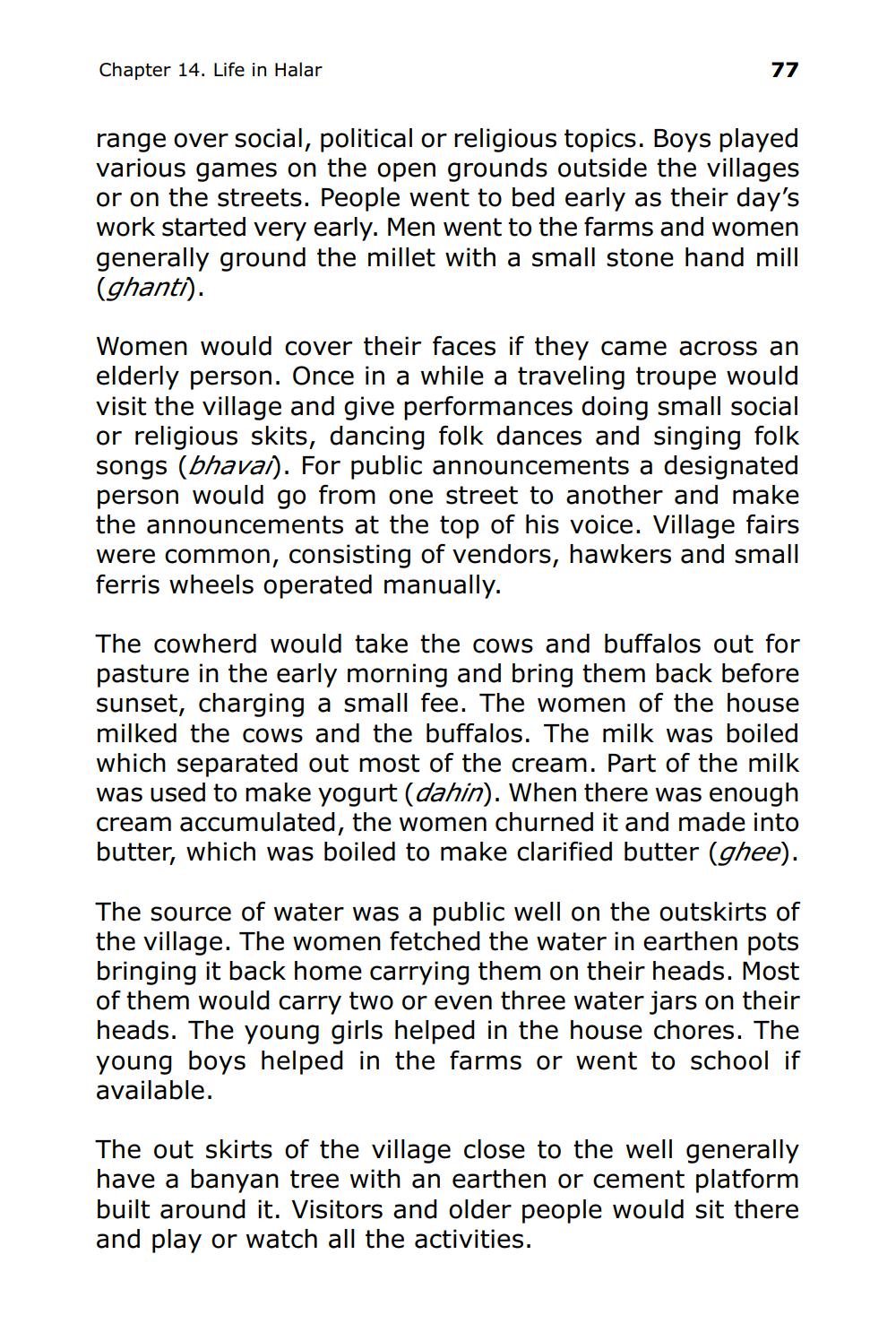________________
Chapter 14. Life in Halar
77
range over social, political or religious topics. Boys played various games on the open grounds outside the villages or on the streets. People went to bed early as their day's work started very early. Men went to the farms and women generally ground the millet with a small stone hand mill (ghanti).
Women would cover their faces if they came across an elderly person. Once in a while a traveling troupe would visit the village and give performances doing small social or religious skits, dancing folk dances and singing folk songs (bhavai). For public announcements a designated person would go from one street to another and make the announcements at the top of his voice. Village fairs were common, consisting of vendors, hawkers and small ferris wheels operated manually.
The cowherd would take the cows and buffalos out for pasture in the early morning and bring them back before sunset, charging a small fee. The women of the house milked the cows and the buffalos. The milk was boiled which separated out most of the cream. Part of the milk was used to make yogurt (dahin). When there was enough cream accumulated, the women churned it and made into butter, which was boiled to make clarified butter (ghee).
The source of water was a public well on the outskirts of the village. The women fetched the water in earthen pots bringing it back home carrying them on their heads. Most of them would carry two or even three water jars on their heads. The young girls helped in the house chores. The young boys helped in the farms or went to school if available.
The out skirts of the village close to the well generally have a banyan tree with an earthen or cement platform built around it. Visitors and older people would sit there and play or watch all the activities.




